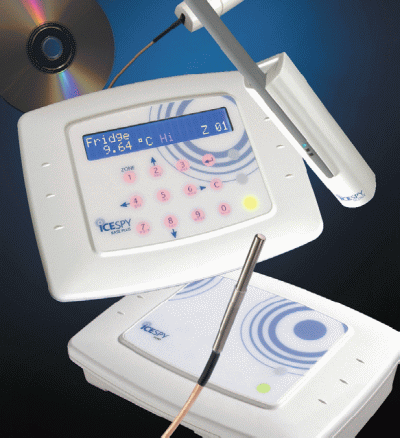 Ian Robinson, group managing director, the IMC Group, explains why regular temperature, humidity and moisture checking is so important in food manufacturing, transportation and storage, and suggests the use of wireless devices to avoid food safety and spoilage issues
Ian Robinson, group managing director, the IMC Group, explains why regular temperature, humidity and moisture checking is so important in food manufacturing, transportation and storage, and suggests the use of wireless devices to avoid food safety and spoilage issues
Food monitoring has never been more important. Companies that wish to stay ahead of their global competitors need to ensure that they are adhering to legal requirements, both in order to comply and to protect consumer health and interests.
Thankfully, new technology enables food and drink providers to be assured that the quality of their products is not compromised during production, handling or storage. As legislation becomes more stringent, such manufacturers are beginning to invest in wireless technology to help maintain product quality, and reduce the amount of waste and energy usage.
Regular temperature control monitoring is compulsory especially when handling ‘high-risk’ foodstuffs such as fish, meat, and dairy. These foods must be kept hot or chilled by law to prevent hazardous bacteria, such as E. coli and Salmonella from developing, which can lead to food poisoning.
Staff can often spend hours of their day ensuring that regular and accurate readings are taken from products and storage units including fridges and chillers. They must do this in order to adhere to the Food Safety Regulations, which state: “any person who keeps any food at or in food premises at a temperature above 8°C shall be guilty of an offence.” Ignoring such provisions can cost companies thousands in fines, as well as being highly detrimental to their reputation.
Similarly, food manufacturers have a responsibility to ensure that goods reach their destination in an acceptable condition. Food and drink must be monitored continually during transportation when it is most likely to be subjected to unacceptable temperature fluctuations. Delivering spoilt products to a customer can damage a company’s reputation and can be expensive to both parties due to the cost of wastage and additional transport costs.
 Maintenance warnings
Maintenance warnings
Aside from the legal requirements, regular temperature, humidity and moisture checking can highlight the need for maintenance checks, which can reduce the number of electrical failures as well as the amount of food spoilage.
Similarly, it can determine whether or not too much energy is being consumed, driving down costs and protecting the environment.
In response to the demand for more reliable monitoring, the IMC Group has developed and manufactured a number of devices designed to alleviate such pressures.
Silvertree Engineering, part of the IMC Group, has created a wireless monitoring and alarm solution allowing users more flexibility in where they place the device. The Icespy System5 automatically records 1 minute, 10 minute and hourly readings from each storage/refrigeration unit and transmits this data to a PC where it can be viewed and assessed. An adjustable thermostat also allows food manufacturers to prevent unnecessary energy consumption by setting a pre-determined threshold.
The main user can receive an SMS alert to their mobile when a serious problem is detected, saving staff from carrying out manual checks which can often create a number of errors as well as being time consuming. In addition, the system contains local audible/visible alarms and remote email and voice call alarms.
For those concerned by the safety of goods during transportation, Hanwell (another of IMC’s companies) has designed and manufactured the iSense. Incorporating wireless GPRS technology, the device can monitor for long periods of time with minimal user intervention. By monitoring the interior temperature of a product (in temperatures as low as -20°C and as high as 60°C), the iSense can ensure foods that are sensitive to temperature are stored in the ideal climate – whether frozen, chilled or warm.
 Remote management
Remote management
A battery life of up to five years and robust design means the iSense doesn’t require any mains power or external wiring. The device can be managed remotely, so it is easy to determine whether a product’s safety has been compromised during or after transit.
The real-time information recorded from the device can then be transmitted live, via GPRS, to a central database, and can be accessed on a PC for viewing and assessment.
Although a standard thermometer probe can test products, wireless devices such as the IceSpy System 5 and iSense, allow staff and management to concentrate on other parts of the business without the worry of neglecting a serious food safety issue.
Without investment in such technology to monitor temperature, humidity and moisture, food providers not only risk putting consumer health at risk but may be faced with legal action, which can impact directly on a business’s success.

